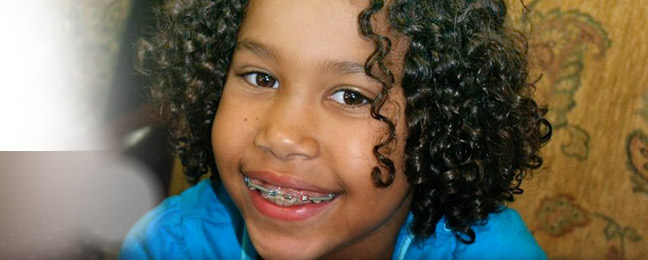Two-Phase Treatment

Why Braces | For Children and Adults | Two-Phase Treatment | Life with Braces | Brushing & Flossing | Surgical Orthodontics | Orthodontic Dictionary | Emergency Care
Approximately 20% of children that we see between the ages of 7 to 10, can benefit from an early phase of treatment. All benefit from an orthodontic consultation and the majority are better served to be treated when they have erupted most of their permanent teeth, at age 11 to 12 or older. Our practice has a strong recall system that allows us to follow children and inform them and their parents of the developing problems and when the optimal time for treatment is.
What is the advantage of two-phase orthodontic treatment?
Two-phase orthodontic treatment usually is indicated in cases of very crowded front teeth and/or bite problems such as a crossbite or underbite. Treatment is usually initiated at age 7 to 9 when the incisors and first permanent molars erupt. By expanding the dental arches, there may be a better chance to keep all of the permanent teeth in the future and correcting abnormal bite problems allows the upper and lower jaws to grow and develop in a more normal growth pattern. Habits such as thumb sucking and strong tongue thrusting may be treated early also.
First Phase Treatment: Your foundation for a lifetime of beautiful teeth
The goal of first phase treatment is to develop the jaw size in order to accommodate all the permanent teeth and to relate the upper and lower jaws to each other. Children sometimes exhibit early signs of jaw problems as they grow and develop. An upper and lower jaw that is growing too much or not enough can be recognized at an early age. If children after age 6 are found to have this jaw discrepancy, they are candidates for early orthodontic treatment.
Planning now can save your smile later
Because they are growing rapidly, children can benefit enormously from an early phase of orthodontic treatment utilizing appliances that direct the growth relationship of the upper and lower jaws. Thus, a good foundation can be established, providing adequate room for eruption of all permanent teeth. This early correction may prevent later removal of permanent teeth to correct overcrowding and/or surgical procedures to align the upper and lower jaws. Leaving such a condition untreated until all permanent teeth erupt could result in a jaw discrepancy too severe to achieve an ideal result with braces.
Making records to determine your unique treatment
Orthodontic records will be necessary to determine the type of appliances to be used, the duration of treatment time, and the frequency of visits. Records consist of models of the teeth, x-rays, and photographs.
Resting Period
In this phase, the remaining permanent teeth are allowed to erupt. Retainers to hold the front teeth in place and maintain dental arch expansion are worn during the resting period, mainly at night. It is best to allow the existing permanent teeth some freedom of movement while final eruption of teeth occurs. A successful first phase will have created room for teeth to find an eruption path. Otherwise, they may become impacted or severely displaced.
Monitoring your teeth's progress
In other words, at the end of the first phase of treatment, teeth are not in their final positions. This will be determined and accomplished in the second phase of treatment. Selective removal of certain primary (baby) teeth may be in the best interest of enhancing eruption during this resting phase. Therefore, periodic recall appointments for observation are necessary, usually on a six-month basis.
Second Phase Treatment: Stay healthy and look attractive
The goal of the second phase is to make sure each tooth has an exact location in the mouth where it is in harmony with the lips, cheeks, tongue, and other teeth. When this equilibrium is established, the teeth will function together properly.
Movement & Retention
At the beginning of the first phase, orthodontic records were made and a diagnosis and treatment plan established. Certain types of appliances were used in the first phase, as dictated by the problem. The second phase is initiated when all permanent teeth have erupted, and usually requires braces on all the teeth for an average of 24 months. Retainers are worn after this phase to ensure you retain your beautiful smile.